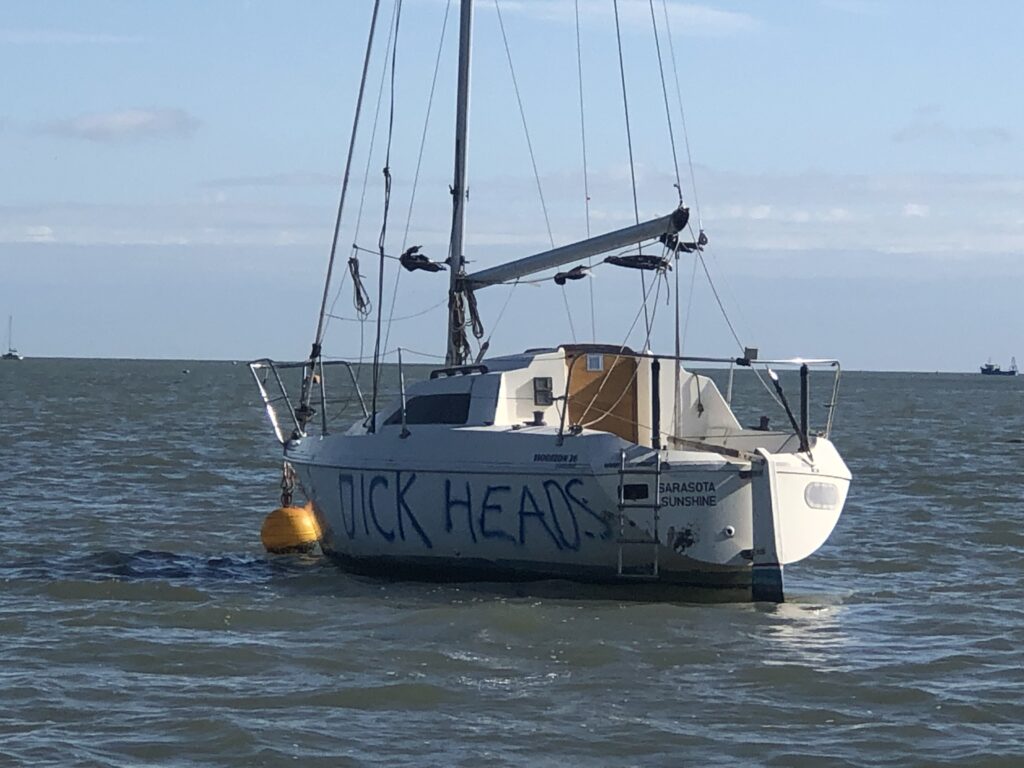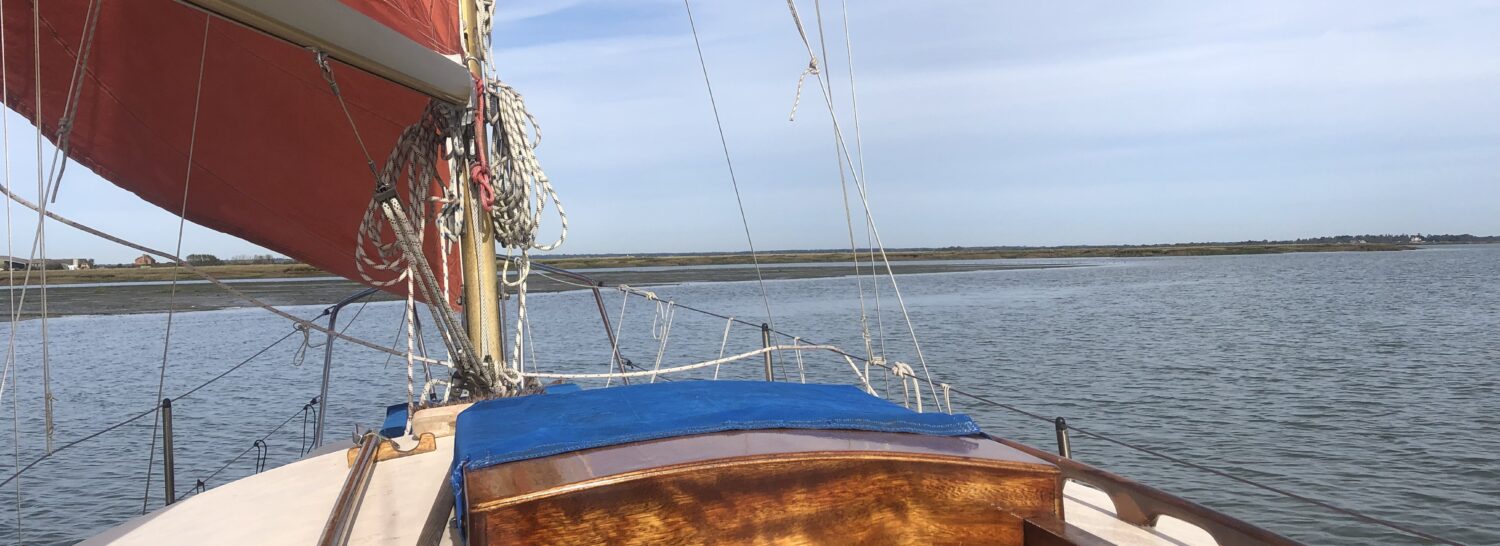I was sitting in hospital with time, I thought, to get on with a blog I had earlier prepared. The plan was to use up those boring hours of waiting with time to muse and think…
It wasn’t to be for I was in and out after having a total knee replacement that there just wasn’t the space. Visits from doctors, nurses administering pain blockers and coping meant time ran away.
So, my earlier thoughts on a couple of news items that popped up on Leisure Marine News had to wait.
Wherever one walks around the coast of Suffolk, Essex and Kent, the story is the same. A plethora of plastic waste can be found washed up along the tide lines…
In many respects this problem has become worse over the last decade. Why?
Well, the simplistic answer is essentially obvious – it is thrown aside by the uncaring folk of the neighbourhood or from vessels. The latter is not the norm.

Some of it will be from wind-blown material, especially up within the headwaters of the waterway.
This is not just an East Coast – Thames Estuary – problem. Sailing some years ago in the Western Isle of Scotland we came across one particularly badly affected beach in a bay. In particular, I remember fish boxes from Portugal and plastic bottles with non-English labels. Never mind the rest.
To say the least, the media has been pretty forward in promoting the cause against plastic pollution but it goes on, seemingly unabated.

I wonder why the perpetrator of the graffiti did this terrible deed?
The vessel pictured in my own local waters has been strung with plastic bags for years – over a decade at the least – and when they shred, as they inevitably do, they are ‘quietly’ renewed.
One has to ask the question: Is the owner stupid (unlikely) or just damned uncaring of the environment. The latter is the probable.
I could not possibly condone the graffiti, but clearly a boat owner, boarder or canoeist has seen fit to make a point… Forward of the ‘D’ for DICK is a crude drawing of an erect male member! The picture was taken in October 2022 and recently when passing that way the message was still in situ but the flying plastic bags have completely shredded into the local waters.
Some years ago I landed on Burntwick Island along Saltpan Reach on the River Medway in Kent. I was looking at the old remnants from a military boom defence establishment. The ‘land’ is being eaten away by the rising tides and poking out of a metre high edge some distance from the surface there was plastic! How long it had been buried, I wondered…

Evermore dire reports are floating into the media to be read by those who are interested and ignored by, probably, the majority whether or not they condone pollution or not. Most water users are as good as gold, but we have all seen some pretty bad behaviour going on.
So, what did I read that prompted these thoughts?
From Leisure Marine 9th March 2023:
The item said that:
‘Scientific study has found that there are now 171 trillion pieces of plastic estimated to be floating in the world’s oceans. The data suggests this is an increase from an estimated concentration of 16 trillion pieces in 2005.
Plastic represents a huge threat to marine life, as it can kill fish and sea animals who mistake it for food. Plastic can take hundreds of years before it breaks down into a less harmful state.’
A recent UN treaty of the seas is signing up nations to designate protected areas around the coast – the UK is part of this system already – and around 30% of the world’s oceans would become protected too.
The article went on:
‘The reasons behind such a sharp increase are not confirmed, although researchers say it could be explained by legislation around pollution being replaced by voluntary agreements. It could also be linked to larger pieces of plastic breaking into smaller pieces — or the amount of data collected.
Prof Richard Thompson at Plymouth University, who was not involved in the study, told the BBC that the estimate adds to what scientists know about marine pollution.
“We are all agreed there is too much plastic in the ocean. We urgently need to move to solutions-focused research,” he says.
Authors of the study argue the best long-term global solutions involve standardised monitoring frameworks to track global trends, and creating binding and enforceable international agreements to prevent the emissions of plastic pollution.’
Read more about it here:
There are things that yachting folk can do to help cut the volume, other than not throwing overboard. Also, in a yacht yard, wind-blown material becomes a watery hazard.

From Leisure Marine 16th March 2023:
See:
The study said:
‘The team, consisting of scientists from Plymouth Marine Laboratory, University of East Anglia and the University of Plymouth, exposed juveniles of the mussel species mytilus to three treatments of microfibre, which reflects both current and predicted future concentrations of polyester and cotton microfibres in the natural environment.
Studies suggest that as much as 4.8 to 12.7 million metric tons of plastic enter the global ocean every year.
Fibres are one of the most common forms of microplastic identified in environmental studies, accounting for up to 91 per cent of the total identified microplastics in some studies.’
The microfibres are small at around 0.01mm – 0.5mm in size and this sizing was used in an experiment with mussels in a laboratory.
The results howed slower and small size growth of maturing molluscs.
A team member said:’
‘Additionally, “Reduced growth rates could alter the energetics of food webs, as smaller mussels are less nutritionally valuable, both to their predators in the natural environment and to us as consumers of seafood. Microfibres and other microplastics expose marine animals, such as mussels, to an additional risk in an environment already at risk from other challenges such as climate change.”
Note here, plastic bag flyers:
‘Fibres that are less than 5mm are termed microfibres. These tiny fibres are predominantly generated from the fragmentation of textiles, stemming from the day-to-day use and washing of clothes, and from the weathering and abrasion of marine infrastructure, such as netting and rope.
Microfibres are typically composed of polyester, polypropylene or nylon. However, numerous studies also report the presence of naturally derived and semi-synthetic microfibres (e.g. cotton, bioplastic) in environmental samples, which have received relatively little attention compared to their plastic counterparts.’
So, to combat household washing pollution, micro-filters are being developed. The retrofit and integration of a filter to a washing machine and captures and recycles microfibres as small as one micron.
As said previously, the general public have a lot to answer for and could, at a stroke, contain much of what ends up in the seas around our shores.

Food for thought and concrete action eh!
